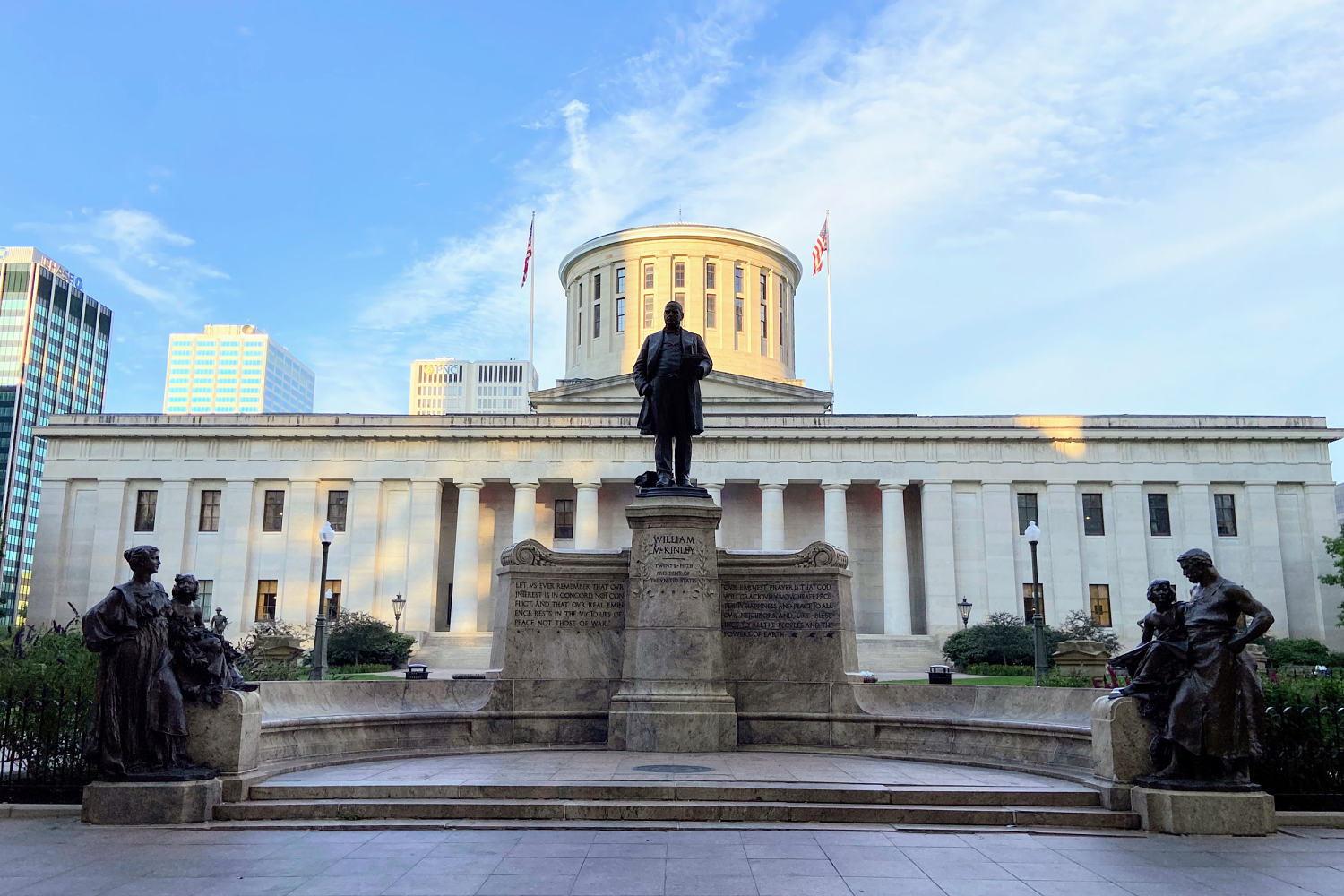
Ohio Republican and Democratic lawmakers unanimously approved a new congressional map that would give a slight, but not overwhelming, boost to the GOP ahead of next year’s midterm elections.
At a meeting Friday morning, members of the state’s bipartisan redistricting commission approved the proposed map, which was released on Thursday as part of an unexpected deal. The map shifted two Democratic-held districts to the right and one to the left while also maintaining 10 districts that favor Republicans and two that are Democratic strongholds. Punchbowl News was first to report details of the deal.
Suzan DelBene, the chair of the Democratic Congressional Campaign Committee, said “this is not a fair map for Ohio voters,” but praised Democratic legislators for “negotiating to prevent an even more egregious gerrymander.”
“This compromise keeps us on the path to taking back the House Majority and we’ll continue to win across Ohio because voters know it’s House Democrats who are fighting for them,” DelBene said in a statement.
The new map came as a surprise to many observers. Democrats largely expected the constitutionally mandated redistricting commission to reach a stalemate, as it did in 2021. If the commission failed to settle on a new map ahead of the 2026 elections, responsibility for setting congressional boundaries would have fallen back to the Republican-controlled Legislature, which could have drawn an aggressively gerrymandered map. If that happened, Democrats had threatened to pursue a statewide referendum that could have resulted in voters blocking the map from going into effect.
The map won’t be subject to a referendum, while Democrats avoided the worst-case scenario map. In negotiations, a source familiar with the negotiations said, Republicans showed Democrats a map that had the GOP controlling 13 of the state’s 15 districts.
A voter referendum on such a map would have required Democrats to gather nearly 250,000 signatures in just 90 days, a difficult feat under any scenario, let alone during the holidays and Ohio’s winter months.
Lawmakers on the redistricting commission faced some protests at Friday’s meeting.
“Shame, shame on you all,” said members of the public who attended the meeting to offer comment. “You sold us out!”
Ohio is represented in Congress by 10 Republicans and five Democrats. Democratic Reps. Greg Landsman and Marcy Kaptur would face more competitive districts under the new map, while Rep. Emilia Sykes’ district would become slightly more Democratic.
After the bipartisan commission approved the map Friday, Kaptur and Sykes said they would run for re-election under the news district lines.
“Let the Columbus politicians make their self-serving maps and play musical chairs, I will fight on for the people and ask the voters for their support next year,” Kaptur said in a post on X.
Under the current lines, the Cook Political Report with Amy Walter rated Kaptur’s and Sykes’ seats as “toss ups” and Landman’s as “likely Democratic.”
The emergence of Ohio’s new map proposal comes amid an unusually aggressive mid-decade redistricting cycle, kicked off by President Donald Trump, who has asked Republican-led states to draw new maps in an effort to shore up the party’s narrow U.S. House majority.
Texas, Missouri and North Carolina have all drawn maps boosting Republicans, while California Democrats are asking voters to approve new district lines next week.
Virginia Democrats took the first major step this week towards modifying their redistricting commission to allow them to redraw their state’s map next year, while Indiana GOP lawmakers are expected to soon consider a redistricting effort. Other states, including Louisiana, await a Supreme Court ruling they hope could open the door to redrawing their congressional maps next year, too.


